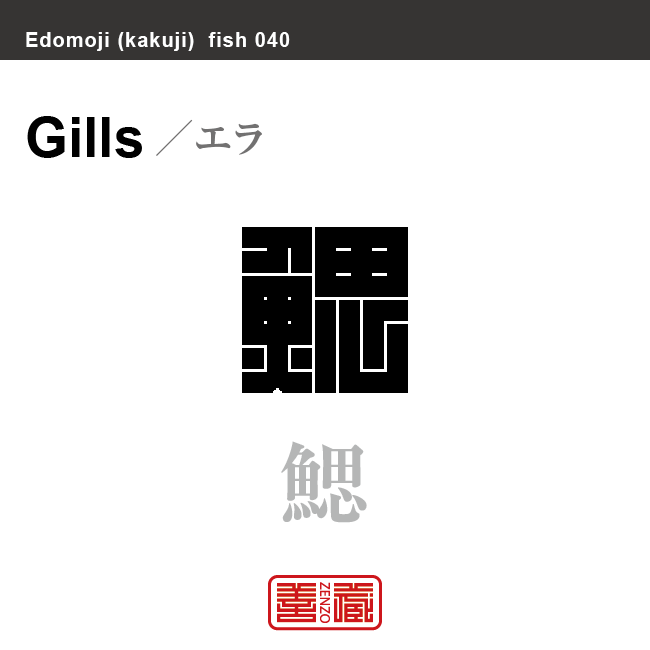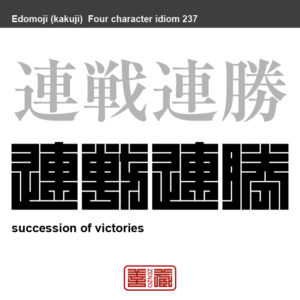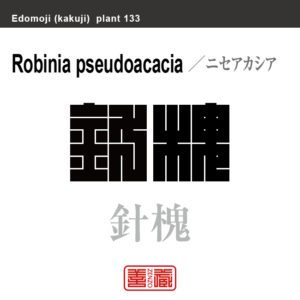鰓 エラ 角字で魚の名前、漢字表記、魚編(さかなへん)の漢字

鰓
エラ
英語:Gills ギルス
Unicode: [鰓_0x9C13]
水中で生活する生き物の呼吸器官で、水中の溶存酸素を取りこみ、体内の二酸化炭素を排出して呼吸(ガス交換)を行います。
魚類のものは、くしの歯状の鰓弁(さいべん)に毛細血管が分布し、これに触れる水から酸素を取り込み、二酸化炭素を排出します。また、ガス交換に加え、浸透圧調節、アンモニア排出の3つの役割を果たしています。
また、人のあごの両横のはしのことも「えら」と呼び、これが発達している人を「えらが張っている」と呼ぶこともあります。
角字とは?
江戸時代に誕生した角字は、正方形のグリッド内にほぼ水平・垂直のラインのみで文字(漢字)が表現されるグラフィックアートです。
正方形という限られた空間の中に、あらゆる文字を閉じ込めようとするグラフィックデザインは、前述した、ミニマムな物に対する日本人特有のこだわりが随所に感じられます。
そのシンプルで有りながら、奥深い「角字」は多くの日本人を魅了し、お祭りで着る半被や印半纏(しるしばんてん)と言われる着物や、商標、印鑑、家紋、看板デザインなどに今日まで数多く使用されてきました。
What is Kakuji?
There is a style of penmanship called “Kakuji” in Japan. Edo-born Kakuji is a graphicart that expresses letters (kanji) with almost horizontal and vertical lines only.
The design which bases on many straight lines seems simple, or too plain even at its first glance; yet this beautiful artistic penmanship that encompasses the aesthetic of the Japanese in the Edo era, also known as “Iki”, and playfulness has long been inherited to this day, thanks to the masteries’ long years of efforts in training and refinement.
Kakuji with its simplicity and depth is used for designs such as trademark, hanko stamp, family crest and signboard.































































 2文字コード:MZ 3文字コード:MOZ 数字:508 ITU:258 ccTLD:.mz
2文字コード:MZ 3文字コード:MOZ 数字:508 ITU:258 ccTLD:.mz







































































































































